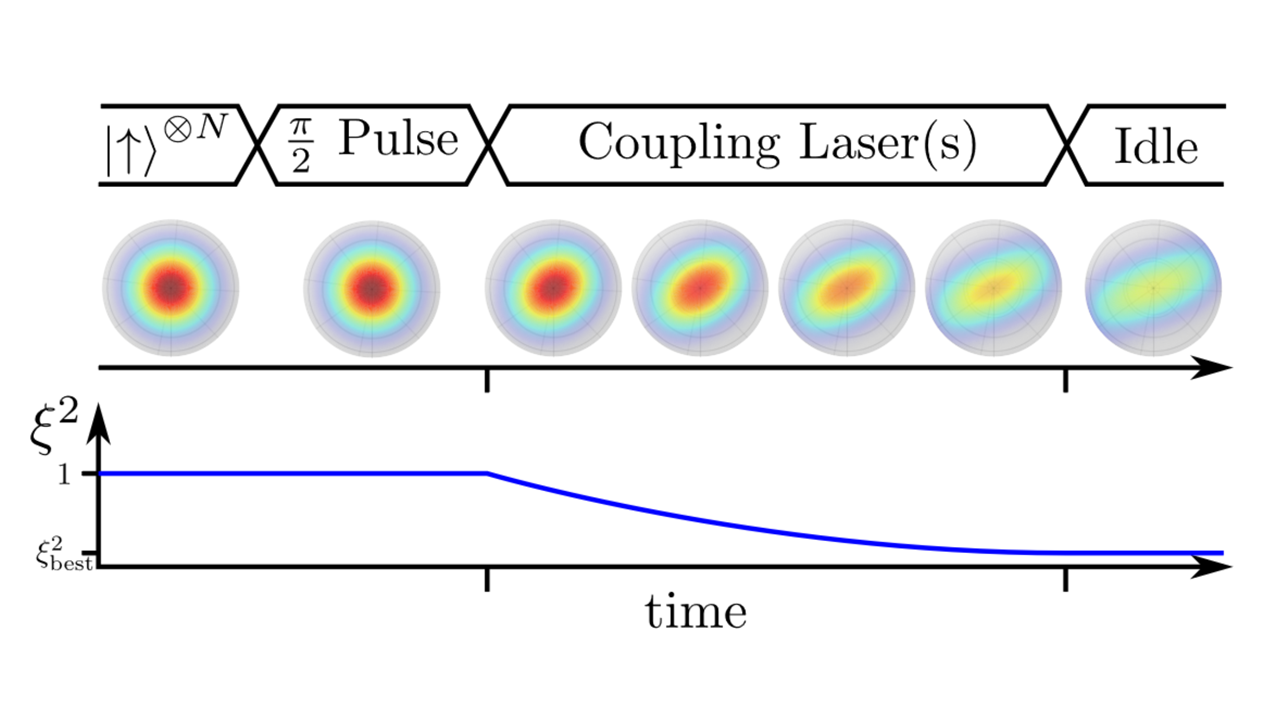百望讲坛(51)|波兰科学院物理研究所Emilia Witkowska副教授作报告
2023/11/02
【时 间】 7-Nov-2023(Tuesday)10:00am (Beijing time)
【地 点】 量子院526会议室
【报告人】 Prof. Emilia Witkowska(Institute of Physics Polish Academy of Sciences, Warsaw, Poland)
【主持人】 Li You (Tsinghua University & BAQIS)
【题 目】Spin squeezing and Bell correlations with ultra-cold atoms in one-dimensional optical lattice
【摘 要】The second Quantum Revolution’s main objective lies in multipartite entangled states: their production, storage, certification, and application. Such states, i.e., many-body entangled and many-body Bell correlated states, are essential resources for quantum-based technologies and quantum-enhancement metrology. As such, a general protocol allowing the controlled generation of such states is an extensive research direction in modern quantum science. Spin squeezing represents such a protocol.
I will discuss methods to obtain scalable spin squeezing in isotropic Heisenberg spin chains. Such spin-squeezed atomic crystal can be obtained using either bosonic or fermionic ultra-cold atoms in optical lattices. It can be implemented in the Ramsey-type spectroscopy scheme as illustrated in Fig. 1. I will show how the addition of spin-flip coupling induces effective interactions among individual spins allowing the production of scalable spin squeezing [1]. In this scheme the boundary conditions are important and I will discuss the influence of them on the squeezing dynamics [2]. I show how to quantify the level of many-body Bell correlations generated in the systems [3, 4]. The schemes could be directly implemented experimentally with state-of-the-art techniques.

FIG. 1: The Ramsey-type spectroscopy for the spin-squeezing generation: (i) preparation of the initial spin coherent state, (ii) unitary evolution with the spin-flip coupling generates spin squeezing, (iii) storing the spin squeezed state in the Mott phase when the spin-flip coupling is turned off.
References
[1] One- and two-axis squeezing via laser coupling in an atomic Fermi-Hubbard model T. Hernández Yanes, M. Plodzień, M. Mackoit Sinkeviciene, G. Zlabys, G. Juzeliūnas, E. Witkowska, Phys. Rev. Lett. 129, 090403 (2022).
[2] Spin squeezing in open Heisenberg spin chains T. Hernández Yanes, Giedrius Zlabys, Marcin Plodzień, Domantas Burba, Mazena Mackoit Sinkeviciene, Emilia Witkowska, Gediminas Juzeliūnas, Phys. Rev. B 108, 104301 (2023)
[3] One-axis twisting as a method of generating many-body Bell correlations, Marcin P?odzień, Maciej Lewenstein, Emilia Witkowska, Jan Chwedeńczuk, Phys. Rev. Lett. 129, 250402 (2022)
[4] Generation of scalable many-body Bell correlations in spin chains with short-range two-body interactions, Marcin P?odzień, Tomasz Wasak, Emilia Witkowska, Maciej Lewenstein, Jan Chwedeńczuk, arXiv:2306.06173
【报告人简介】Emilia Witkowska made PhD in 2007 in theoretical physics at the Institute of Physics Polish Academy of Sciences in Warsaw (IF PAN) under the supervisor of Prof. M. Gajda. Since 2008 she has been working at IF PAN mostly on the theory of ultra-cold atoms in the context of quantum metrology and quantum information. In particular, on the generation of many-body quantum correlations and quantum simulators with ultra-cold bosons and fermions. In 2018 Emilia Witkowska obtained a professor position at IF PAN and since this time she has been leading a small group focusing on the development of novel types of protocols for the generation of spin-squeezing and many-body Bell correlations with spin chains that can be simulated by ultra-cold atoms in optical lattices, tweezers arrays, ions or molecules.
 English
English OA
OA Email
Email 登录
登录
